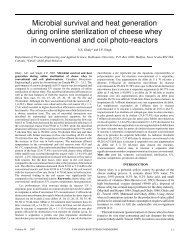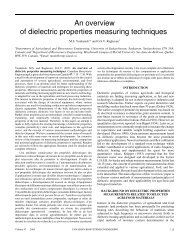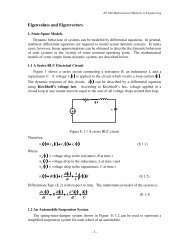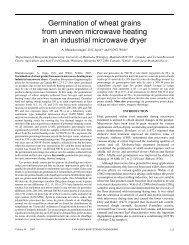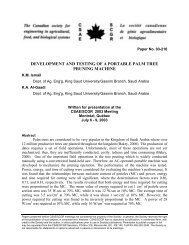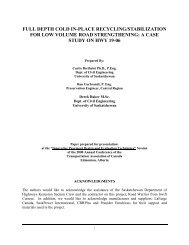Xilinx - Design Reuse Methodology for ASIC and FPGA Designers.pdf
Xilinx - Design Reuse Methodology for ASIC and FPGA Designers.pdf
Xilinx - Design Reuse Methodology for ASIC and FPGA Designers.pdf
Create successful ePaper yourself
Turn your PDF publications into a flip-book with our unique Google optimized e-Paper software.
10System ClockingRule – The design team must decide on the basic clock distribution architecture <strong>for</strong> the chip earlyin the design process. The most efficient clocking strategy <strong>and</strong> clock distribution will most likelybe determined by the targeted architecture. This strategy must be well documented <strong>and</strong> conveyedto the entire design team.<strong>FPGA</strong> architectures provide high-speed, low-skew clock distributions through dedicated globalrouting resources. <strong>FPGA</strong>s designed <strong>for</strong> SoRC on average provide 4 dedicated global clockresources <strong>and</strong> additional clocking resources through flexible low-skew routing resources. Thededicated resources <strong>for</strong> clocking distributions consist of dedicated clock pads located adjacent toglobal nets that in turn can drive any internal clocked resources. The input to the global buffer isselected either from the dedicated pads or from signals generated internal to the <strong>FPGA</strong>.Rule – Keep the number of system clocks equal to or less than the number of dedicated globalclock resources available in the targeted <strong>FPGA</strong>.As an <strong>FPGA</strong>s design grows in size, the quality of on-chip clock distribution becomes moreimportant. <strong>FPGA</strong> architectures designed <strong>for</strong> SoRC generally employ a clocking method to reduce<strong>and</strong> manage the impact of clock skew <strong>and</strong> clock delay. <strong>FPGA</strong> architectures <strong>for</strong> SoRC provideeither a dedicated Phase-Locked Loop (PLL) or Delay-Locked Loop (DLL) circuit. Thesecircuits not only remove clock delay but can also provide additional functionality such asfrequency synthesis (clock multiplication <strong>and</strong> clock division) <strong>and</strong> clock conditioning (duty cyclecorrection <strong>and</strong> phase shifting). <strong>Design</strong>ers can also use the multiple clock outputs, deskewed withrespect to one another, to take advantage of multiple clock domains.Rule – The number of clock domains <strong>and</strong> the clock frequency must be documented as well as therequired frequency, associated PLL or DLL <strong>and</strong> the external timing requirements (setup/hold <strong>and</strong>output timing) needed to interface to the rest of the system.Delay-Locked Loop (DLL) vs. Phase-Locked Loop (PLL)Either a phase-locked-loop (PLL) or a delay-locked-loop (DLL) can be used to reduce the on-chipclock-distribution delay to zero. Both can be considered a servo-control system since they use afeedback loop.A PLL uses a phase detector to drive a voltage-controlled oscillator (VCO) such that the VCOoutput has the desired frequency <strong>and</strong> phase. This generally involves an analog low-pass filter <strong>and</strong>an inherently analog VCO. A PLL can recover a stable clock from a noisy environment, but it isdifficult to avoid generating r<strong>and</strong>om clock jitter.A DLL uses a phase detector to increase the delay so much that the subsequent clock edge occursat the desired moment. This generally involves a multi-tapped delay line, consisting of a largenumber of cascaded buffers. The adjustment is done by a digitally controlled multiplexer. Thisscheme lends itself to a totally digital implementation <strong>and</strong> is more compatible with st<strong>and</strong>ardcircuit design methodology <strong>and</strong> IC processing. A DLL cannot suppress incoming clockjitter, passing the jitter straight through. There is no r<strong>and</strong>om output jitter, but there is a systematicoutput jitter of one delay-line increment, typically less than 50 picoseconds.



